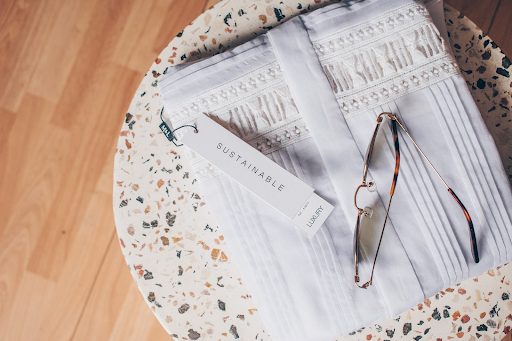In an era where the clamour for sustainability grows louder by the day, luxury fashion finds itself at a pivotal crossroads. Historically synonymous with exclusivity and opulence, the industry now faces an urgent call to weave eco-friendly practices into its very fabric. This transformative journey isn’t merely about altering materials or tweaking production methods; it’s a profound redefinition of luxury in the 21st century. As we embark on this exploration, we uncover a world where glamour and green coalesce, proving that true luxury seamlessly marries ethics with elegance.
The Sustainable Fashion Revolution
Imagine a world where every stitch and seam of your attire narrates a tale of environmental stewardship and ethical responsibility. This vision propels the sustainable luxury fashion revolution forward. Ashley R. Cummings starkly highlights the urgency of this shift, pointing out the luxury fashion industry’s significant contribution to global greenhouse gas emissions. This revelation serves as a clarion call, spurring brands towards innovative solutions that harmonise opulence with eco-consciousness.
The evolution of luxury fashion into a bastion of sustainability marks a pivotal shift in societal values, where luxury is increasingly defined by a brand’s ability to balance elegance with environmental stewardship. The industry’s journey towards sustainability, while fraught with challenges, offers immense rewards. By embracing sustainability, luxury fashion brands can forge deeper connections with their customers, differentiate themselves in a crowded market, and contribute to a more sustainable future. This revolution is reshaping the world, one garment at a time, proving that luxury and ethics can coexist.
The Future of Sustainable Materials
The luxury fashion industry is exploring a plethora of innovative materials that promise to redefine the essence of luxury. Materials like Piñatex, made from pineapple leaves, and fabrics derived from recycled ocean plastics, are not just eco-friendly alternatives; they’re symbols of a new era in fashion where sustainability takes centre stage. These materials are reducing the industry’s environmental footprint and challenging designers to think creatively about how luxury can be both beautiful and sustainable.
The adoption of these unconventional materials by luxury brands sends a powerful message about the importance of protecting our planet. This shift is opening up new avenues for innovation, as designers experiment with these materials to create stunning, eco-friendly pieces that push the boundaries of what’s possible in fashion. It’s a thrilling time for the industry, as these sustainable materials pave the way for a future where luxury and environmental responsibility go hand in hand.
Pioneering Ethical Fashion
Eileen Fisher stands out as a beacon of ethical practices and environmental responsibility in the realm of sustainable luxury fashion. The brand’s commitment to using organic and recycled materials is a core principle that guides every aspect of its operations. This dedication to sustainability has not only earned the brand accolades but has also inspired others in the industry to follow its lead.
Eileen Fisher’s impact on the luxury fashion industry extends far beyond its collections. The brand has become a symbol of what’s possible when a company places sustainability at the heart of its mission. By proving that luxury and ethics can coexist, Eileen Fisher has challenged the industry to rethink its practices and priorities. This influence is a powerful reminder that change is possible, and that by embracing sustainability, luxury fashion brands can play a crucial role in building a more sustainable and equitable world.
Image source: https://pixabay.com/photos/woman-field-sunlight-fashion-hat-1509956/
Stylish Sustainability
Reformation has masterfully blended style with sustainability, proving that eco-conscious fashion can be both chic and desirable. The brand’s innovative use of deadstock fabrics and commitment to renewable energy in its operations exemplifies how fashion can be a force for good. Reformation’s approach is a testament to the idea that sustainability doesn’t have to come at the expense of style or desirability.
Reformation’s journey offers valuable lessons for the industry. The brand’s innovative practices, from utilising deadstock materials to powering its operations with renewable energy, demonstrate that stylish sustainability is achievable. As more brands look to Reformation as a model, we can expect to see a shift towards more eco-conscious practices across the luxury fashion landscape. This shift is reshaping consumer expectations, setting a new standard for what it means to be a luxury fashion brand in the 21st century.
Tech Meets Textiles Innovations
The intersection of technology and textiles is revolutionising the industry’s approach to sustainability. Groundbreaking technologies like 3D fabric printing and AI in design are changing how clothes are made, offering the promise of reduced waste, improved efficiency, and a new level of creativity in fashion design. As brands explore these technological advancements, they’re finding new ways to reduce their environmental impact while still delivering the luxurious products consumers expect.
3D fabric printing allows designers to create intricate, customised pieces without the excess waste typically associated with traditional manufacturing processes. Similarly, AI in design is helping brands optimise their production processes, minimising waste and improving efficiency. These technological innovations are enhancing the creativity and uniqueness of luxury fashion, offering consumers something truly special.
Embracing the Circular Economy in Luxury Fashion
The concept of the circular economy is reshaping luxury fashion, offering a sustainable alternative to the traditional linear model. By embracing principles of recycling, reuse, and repair, luxury brands are finding innovative ways to extend the life of their products and reduce their environmental impact. This shift towards a circular economy is reimagining the entire lifecycle of luxury fashion items, moving the industry towards a more sustainable future.
Luxury brands are increasingly focusing on creating high-quality, timeless pieces that can be worn for years. This emphasis on durability and timeless design is a departure from the fast-fashion mentality, offering consumers a more sustainable and meaningful way to engage with luxury fashion. Additionally, many brands are introducing recycling programs and initiatives that encourage consumers to return used items for refurbishment or recycling, further reducing the environmental impact of their products.
A Model for Sustainable Luxury Retail
Cosette emerges as a shining example of how retail can be both luxurious and environmentally conscious. By offering luxury items from excess inventory at discounted prices, Cosette addresses the issue of overproduction in the luxury goods industry. This approach not only provides consumers with access to high-end products at more affordable prices but also contributes to reducing the environmental impact associated with the production and disposal of excess stock.
Cosette’s commitment to sustainability extends beyond just selling excess inventory. The brand’s dedication to offering a curated selection of luxury items reflects a broader commitment to encouraging more mindful consumption among consumers. By carefully selecting products that embody luxury while catering to varied tastes and occasions, Cosette is promoting the principles of sustainable fashion. This approach discourages a throwaway culture and encourages consumers to invest in high-quality, timeless pieces that they will cherish for years to come.
How Consumers Can Drive Change
As the luxury fashion industry evolves towards greater sustainability, the power of the consumer cannot be underestimated. By supporting brands that prioritise sustainability, consumers are not just making a statement about their values; they’re also encouraging more brands to adopt eco-friendly practices. This consumer-driven demand for sustainability is a powerful force, pushing the industry towards a more responsible and ethical future.
One of the most impactful ways consumers can support sustainable luxury fashion is by verifying the sustainability claims of brands. In an age where “greenwashing” is all too common, it’s important to do your homework and ensure that the brands you support are genuinely committed to sustainability. By being an informed consumer, you can make choices that align with your values and contribute to a more sustainable fashion industry.
The Path Ahead for Sustainable Luxury Fashion
The journey towards sustainable luxury fashion is not without its challenges. Gittemary Johansen critiques the sustainability efforts of major luxury brands, arguing that while some are making minor improvements, they are far from achieving true sustainability. This highlights the need for continued innovation and investment in sustainable materials, production methods, and business models. By addressing these scalability issues, the industry can ensure that sustainability becomes an integral part of luxury fashion.
Changing consumer perceptions presents both a challenge and an opportunity for the industry. By effectively communicating their sustainability efforts and demonstrating the tangible benefits of eco-friendly practices, luxury brands can change perceptions and build a loyal following of environmentally conscious consumers. This shift in consumer expectations is setting a new standard for luxury fashion, paving the way for a future where luxury and sustainability are inextricably linked.
Envisioning the Future Trends
The future of sustainable luxury fashion is not just a passing trend but a fundamental shift in how the industry operates. With consumers increasingly prioritising sustainability, and technological innovations offering new ways to reduce environmental impact, the future of luxury fashion looks green. This evolution towards sustainability allows brands to connect with consumers on a deeper level, building loyalty and trust through shared values.
Emerging trends in sustainable luxury fashion include the continued rise of innovative materials, the adoption of circular economy principles, and the integration of technology into design and production processes. These trends are redefining what luxury means in the modern world, making luxury fashion more inclusive, accessible, and aligned with the values of a new generation of consumers. The potential for innovation in sustainable luxury fashion is boundless, offering a glimpse into a future where luxury fashion and sustainability are inextricably linked.
See More As:
10 Winter Jackets Fashion Perfect Add-ons to Your Outfits
Top 10 Main Winter Fashion Trends Outfit Styles
Check Related Fashion & Style


